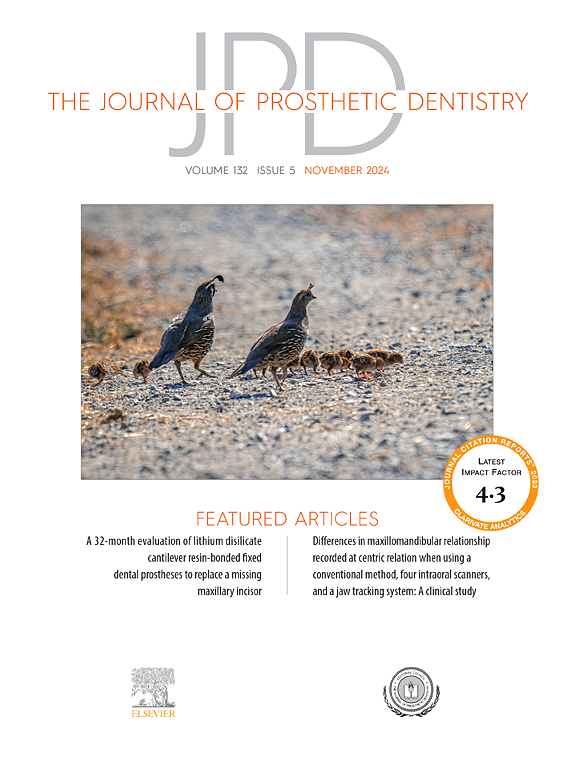应用术后CBCT增强全弓种植体康复的术前计划整合。
IF 4.8
2区 医学
Q1 DENTISTRY, ORAL SURGERY & MEDICINE
引用次数: 0
摘要
在生物修复驱动的种植体治疗计划中,最初的假体设计在种植体放置之前确定。然而,在末端牙列患者中,拔牙后垂直尺寸的丧失和参考牙的缺失使得义齿设计与拔牙后临床情况的对齐,以及精确的咬合配准和最佳的牙齿定位变得复杂。本文介绍了一种新的工作流程,该流程在种植体放置后使用额外的锥形束计算机断层扫描(CBCT)来增强数据对齐,修复体康复和咬合注册,以完成牙种植体的完整弓立即加载。该方法通过整合术前和术后CBCT扫描,并利用稳定的骨标志物作为参考结构,有效地将术前规划转移到术后口内环境。与易于错位的可移动器械或信托标记不同,该技术可确保以最小的调整准确插入假体,适用于各种工作流程,包括徒手植入,并提供可靠和通用的解决方案,以优化种植体支持的假体的结果。本文章由计算机程序翻译,如有差异,请以英文原文为准。
Using postoperative CBCT to enhance preoperative planning integration in complete arch implant rehabilitation
In biorestoratively driven implant treatment planning, the initial prosthetic design is determined before implant placement. However, in patients with a terminal dentition, the loss of vertical dimension after tooth extraction and the absence of reference teeth complicate the alignment of the prosthetic design with the postextraction clinical situation, as well as precise occlusal registration and optimal tooth positioning. This article introduces a novel workflow that employs an additional cone beam computed tomography (CBCT) scan after implant placement to enhance data alignment, prosthetic rehabilitation, and occlusal registration for complete arch immediate loading of dental implants. By integrating preoperative and postoperative CBCT scans and utilizing stable bony landmarks as reference structures, this method effectively transfers preoperative planning into the postoperative intraoral environment. Unlike removable appliances or fiduciary markers, which are prone to misalignment, this technique ensures accurate prosthesis insertion with minimal adjustments, is adaptable to various workflows, including freehand implant placement, and provides a reliable and versatile solution to optimizing the outcomes of implant-supported prostheses.
求助全文
通过发布文献求助,成功后即可免费获取论文全文。
去求助
来源期刊

Journal of Prosthetic Dentistry
医学-牙科与口腔外科
CiteScore
7.00
自引率
13.00%
发文量
599
审稿时长
69 days
期刊介绍:
The Journal of Prosthetic Dentistry is the leading professional journal devoted exclusively to prosthetic and restorative dentistry. The Journal is the official publication for 24 leading U.S. international prosthodontic organizations. The monthly publication features timely, original peer-reviewed articles on the newest techniques, dental materials, and research findings. The Journal serves prosthodontists and dentists in advanced practice, and features color photos that illustrate many step-by-step procedures. The Journal of Prosthetic Dentistry is included in Index Medicus and CINAHL.
 求助内容:
求助内容: 应助结果提醒方式:
应助结果提醒方式:


